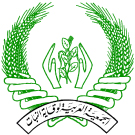Semiochemicals: Manipulating Insect Behaviour for Sustainable IPM

PLANT VIRUS TAXONOMY: THE NEW BINOMIAL NOMENCLATURE FOR VIRUS SPECIES
04/19/2023ISSUE 89 , AUGUST 2023
08/14/2023Jose Romeno Faleiro (IPM-Red Palm Weevil Expert)
Chemical communication plays an essential role in the survival of insect pests. Semiochemicals are behaviour-modifying organic compounds used by insects to convey specific chemical messages. These are species-specific, harmless to the environment, and are of immense significance in the sustainable management of agricultural pests, particularly under organic cropping systems. Semiochemicals are divided into two broad groups viz. pheromones, which mediate interactions among individuals of the same species (intraspecific reactions), and allelochemicals which mediate interactions among individuals of different species (interspecific interactions). Allelochemicals are divided into kairomones mediating interactions favouring the recipient and allomones favouring the emitter. Semiochemicals are well-known management tools, especially for cryptic species and are vital components of integrated pest management programmes the world over.
The sex pheromone of the silkworm moth, Bombyx mori, was the first to be chemically identified in 1959 and is considered the most important semiochemical used in pest management. Isolation and identification of semiochemicals is a sophisticated process generally involving analytical procedures such as SPME, GC-EAG, GCMS and NMR.





